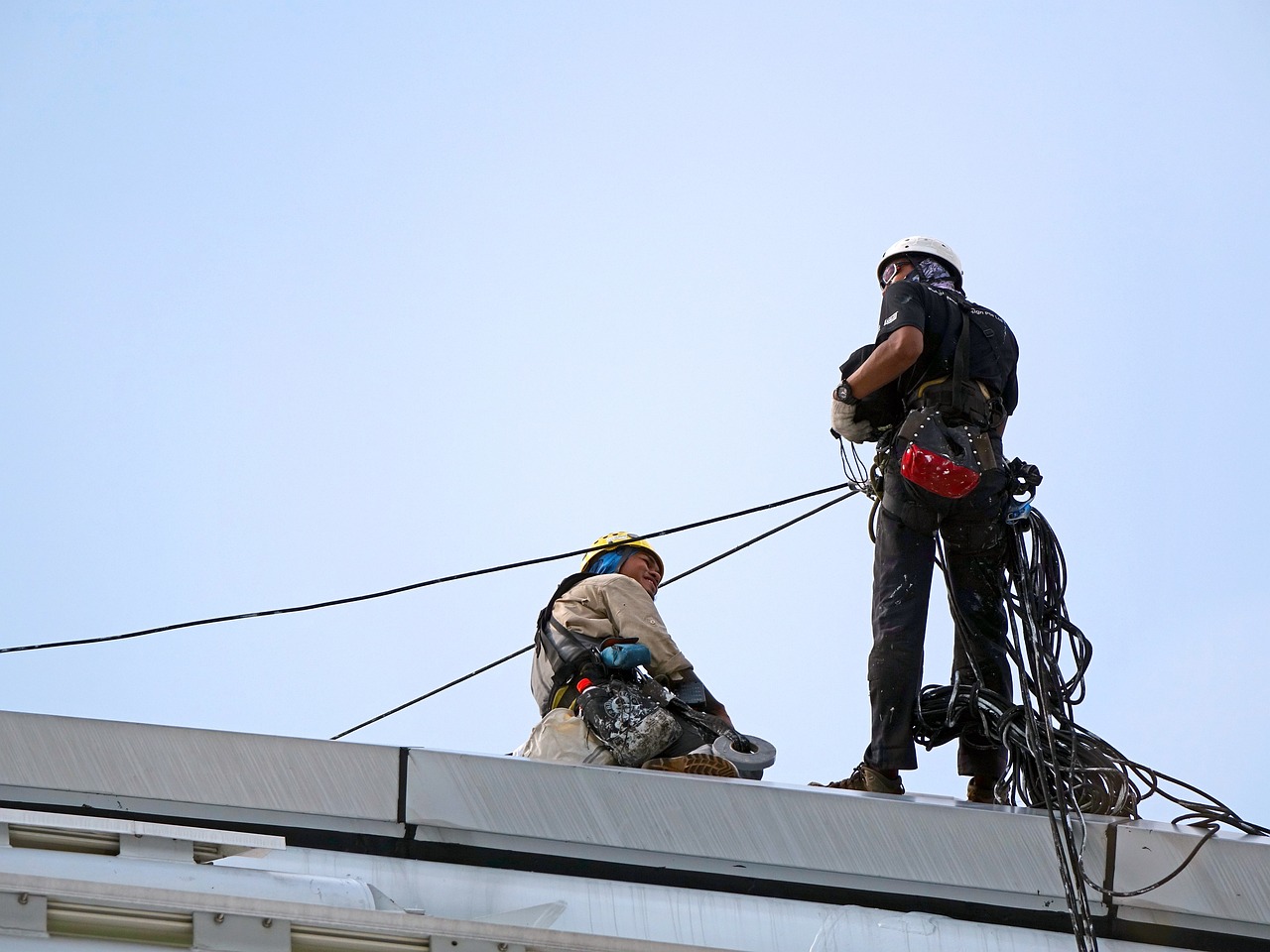Impact of Human Behavior on Safety Measures: The Need to Understand
In today's world, the significance of safety measures cannot be overstated. Whether at work, home, or in public spaces, safety protocols are designed to protect individuals from harm. However, the effectiveness of these measures often hinges on one crucial element: human behavior. Understanding how people react to safety protocols is essential for creating a culture of awareness and responsibility. Why do some individuals comply with safety rules while others disregard them? This article delves into the intricate relationship between human behavior and safety measures, exploring the psychological factors that drive compliance, the perception of risk, and the impact of organizational culture.
When we think about safety, we often envision rules and regulations—hard and fast guidelines meant to keep us safe. Yet, the reality is that safety is as much about people as it is about policies. Each individual's attitude, beliefs, and perceptions play a vital role in how safety measures are implemented and followed. For instance, consider a workplace where employees are encouraged to report unsafe conditions. If the culture promotes openness and values feedback, workers are more likely to comply with safety measures because they feel their voices matter. Conversely, in an environment where employees fear retribution for speaking up, compliance may dwindle, leading to potential hazards.
Moreover, the psychological underpinnings of safety compliance reveal that motivation is key. People are more inclined to adhere to safety protocols when they understand the rationale behind them. Take, for example, the use of personal protective equipment (PPE) in hazardous work environments. If workers see the direct benefits of wearing PPE—such as reduced injury rates—they are more likely to embrace these safety measures. This highlights the importance of not only establishing safety protocols but also effectively communicating their significance.
Additionally, risk perception plays a critical role in decision-making processes. Individuals often interpret risks differently based on their experiences, knowledge, and even emotional responses. Cognitive biases, such as optimism bias (the belief that bad things are less likely to happen to oneself), can lead to dangerous behaviors. For instance, a construction worker might skip wearing a hard hat because they believe they are unlikely to suffer an injury. Understanding these biases is essential for crafting effective safety messages that resonate with individuals and encourage better decision-making.
In conclusion, the impact of human behavior on safety measures is profound and multifaceted. By understanding the psychological factors that influence compliance, organizations can develop more effective safety protocols that not only protect individuals but also foster a culture of safety awareness. As we navigate through various environments, it becomes increasingly clear that the synergy between human behavior and safety measures is not just a matter of policy, but a crucial element in safeguarding our lives.

The Psychology of Safety Compliance
When we talk about safety compliance, it’s essential to understand that it’s not just about following rules; it’s about the psychological factors that drive individuals to adhere to these safety measures. Why do some people take safety protocols seriously while others seem to ignore them entirely? The answer often lies in their motivations, perceptions, and even their past experiences. Understanding these dynamics can lead to more effective safety protocols and a culture that values responsibility and awareness.
One of the key psychological factors is the concept of motivation. People are more likely to comply with safety measures when they see a personal benefit or when they believe that their actions can make a difference. For instance, if an employee understands that wearing a helmet significantly reduces the risk of injury, they are more likely to wear one. This is where the power of intrinsic motivation comes into play. When individuals feel personally invested in their safety and the safety of others, compliance becomes a natural behavior rather than a chore.
Moreover, risk perception plays a crucial role in safety compliance. How individuals perceive risk can greatly influence their behavior. For example, someone who views a certain task as highly dangerous is more likely to follow safety protocols than someone who perceives the same task as relatively safe. This discrepancy can often be attributed to cognitive biases, such as the optimism bias, where individuals believe that they are less likely to experience a negative outcome compared to others. Understanding these biases is vital for organizations aiming to enhance safety compliance.
Another critical aspect to consider is the environment in which individuals operate. A workplace that fosters open communication and encourages feedback can significantly influence safety behaviors. When employees feel comfortable voicing their concerns or suggesting improvements, they are more likely to engage in safe practices. In contrast, a culture that punishes mistakes can lead to fear and, consequently, non-compliance. This is why creating a supportive environment is essential for enhancing safety compliance.
To summarize, the psychology of safety compliance is a complex interplay of motivation, risk perception, and environmental factors. By understanding these elements, organizations can develop more effective safety protocols that resonate with their employees. After all, safety is not just a set of rules to follow; it’s a mindset that needs to be cultivated.
- What is safety compliance? Safety compliance refers to the adherence to safety protocols and regulations to minimize risks and ensure a safe environment.
- Why is understanding psychology important for safety compliance? Understanding psychology helps organizations tailor their safety measures to better motivate individuals and foster a culture of safety.
- How can organizations improve safety compliance? Organizations can improve safety compliance by enhancing motivation, addressing risk perception, and creating a supportive environment.

Risk Perception and Decision Making
Understanding how individuals perceive risk is crucial for effective decision-making, especially in safety-critical environments. Risk perception is not just about the facts; it's heavily influenced by emotions, past experiences, and even social context. Have you ever noticed how some people react to a safety warning with a shrug, while others might panic? This variance in response can be attributed to cognitive biases that shape our understanding of risk.
One of the most significant factors affecting risk perception is cognitive bias. This refers to the systematic ways in which the context and framing of information can alter our judgment. For instance, the availability heuristic leads people to estimate the likelihood of an event based on how easily examples come to mind. If someone has recently heard about a workplace accident, they may overestimate the risks associated with similar tasks, leading to overly cautious behavior. Conversely, if they haven’t encountered any incidents, they might underestimate the risks, which can be equally dangerous.
Another important concept is the optimism bias, where individuals believe they are less likely to experience negative events compared to others. This can result in complacency regarding safety measures. For example, a worker might think, “I’ve been doing this job for years without an accident, so I don’t need to worry about following safety procedures.” This mindset can create a culture of negligence, where safety protocols are viewed as optional rather than essential.
To illustrate the impact of risk perception on decision-making, consider the following table that summarizes different cognitive biases and their effects on safety behavior:
| Cognitive Bias | Description | Impact on Safety Behavior |
|---|---|---|
| Availability Heuristic | Judging the likelihood of events based on recent examples | Overestimation or underestimation of risk |
| Optimism Bias | Believing one is less likely to experience negative outcomes | Complacency towards safety measures |
| Confirmation Bias | Seeking information that supports existing beliefs | Ignoring safety warnings that contradict personal views |
These biases can lead to poor decision-making and a disregard for safety protocols. So, how can we combat these biases and improve decision-making regarding safety? One effective approach is through education and training. By raising awareness about cognitive biases and providing real-life examples of their consequences, individuals can learn to recognize their own biases and make more informed decisions.
Moreover, fostering an environment where open discussions about risks and safety are encouraged can help mitigate the effects of these biases. When individuals feel safe to voice their concerns and share their experiences, it creates a culture of collective responsibility. This not only improves risk perception but also enhances overall safety compliance.
In conclusion, understanding risk perception and its impact on decision-making is essential for enhancing safety measures. By acknowledging cognitive biases and promoting education, organizations can empower individuals to make better choices regarding safety. Remember, when it comes to safety, awareness is key. Are you ready to change your perspective on risk?
- What is risk perception? Risk perception refers to the subjective judgment that individuals make about the characteristics and severity of a risk.
- How do cognitive biases affect safety decisions? Cognitive biases can distort an individual's understanding of risk, leading to poor safety decisions and compliance.
- What can organizations do to improve safety compliance? Organizations can implement training programs that address cognitive biases and promote open discussions about safety.

The Role of Training and Education
When it comes to safety, training and education are not just important; they are absolutely essential. Think about it: how can anyone be expected to follow safety protocols if they don’t even know what those protocols are? This is where effective training programs come into play. They serve as the backbone of safety compliance, ensuring that individuals are equipped with the knowledge and skills necessary to navigate various environments safely. Training isn’t just a one-time event; it’s a continuous journey. Just like learning to ride a bike, you need practice, guidance, and sometimes a little push to stay on the right track.
Moreover, the content of these training programs must be engaging and relevant. Imagine attending a safety seminar that feels more like a lecture than a conversation. Yawn! Instead, training should incorporate interactive elements like role-playing, simulations, and real-life scenarios that resonate with participants. This approach not only keeps participants engaged but also enhances their understanding of how to apply safety measures in real situations. To illustrate this, let’s consider a table that outlines different training methods and their effectiveness:
| Training Method | Description | Effectiveness |
|---|---|---|
| Classroom Training | Traditional lectures and presentations. | Moderate |
| Hands-on Training | Practical exercises and demonstrations. | High |
| Simulation Training | Virtual or physical simulations of real-life scenarios. | Very High |
| Peer-to-Peer Training | Learning from colleagues through shared experiences. | High |
As you can see, hands-on and simulation training methods yield higher effectiveness rates, which means they should be prioritized in safety programs. But it doesn’t stop there. Education goes beyond just imparting knowledge; it’s about fostering a culture of safety awareness. When individuals understand the 'why' behind safety protocols, they are more likely to embrace them. This understanding can be achieved through ongoing education, workshops, and refresher courses that keep safety at the forefront of everyone’s mind.
Furthermore, integrating safety education into everyday conversations can help create a more safety-conscious environment. For instance, discussing safety topics during team meetings or sharing safety success stories can reinforce the importance of compliance. It’s like watering a plant; the more you nurture it, the better it grows. In this way, training and education can transform from mere requirements into a way of life, where everyone actively participates in maintaining a safe environment.
In conclusion, the role of training and education in safety compliance cannot be overstated. They are the keys that unlock the door to a safer workplace and community. By investing in comprehensive training programs and fostering a culture of continuous learning, organizations can significantly enhance their safety measures and ensure that everyone is equipped to act responsibly in any situation.
- What types of training are most effective for safety compliance? Hands-on training and simulation exercises tend to be the most effective as they provide practical experience.
- How often should safety training occur? Safety training should be ongoing, with regular refresher courses to keep everyone informed of new protocols and practices.
- Can peer influence impact safety behaviors? Absolutely! Positive peer influence can encourage adherence to safety measures, while negative influences can lead to risky behavior.
- What role does organizational culture play in safety? A positive organizational culture fosters a sense of responsibility and encourages employees to prioritize safety in their daily activities.

Impact of Real-life Scenarios
Real-life scenarios play a crucial role in enhancing the effectiveness of safety training programs. When individuals engage with practical examples that mimic real-world situations, they are more likely to retain information and apply safety measures in their daily lives. Think about it: wouldn’t you remember a lesson better if it was tied to a real experience rather than just theoretical knowledge? By incorporating real-life scenarios, we create a bridge between abstract concepts and practical applications, making safety protocols more relatable and easier to understand.
Moreover, real-life scenarios foster an environment where participants can actively engage with the material. This hands-on approach not only boosts retention but also encourages critical thinking. For example, during training, if employees are presented with a simulated emergency situation, they must think on their feet, assess risks, and make decisions in real-time. This experience can significantly enhance their ability to respond effectively in actual emergencies. In fact, studies have shown that individuals who undergo scenario-based training report higher confidence levels in their ability to handle safety incidents.
Another benefit of using real-life scenarios is the opportunity to learn from past mistakes. By analyzing incidents that have occurred in the workplace or similar environments, individuals can identify what went wrong and how they can prevent similar occurrences in the future. This reflective practice not only aids in personal development but also contributes to a culture of continuous improvement within the organization. It's like learning to avoid the pitfalls of a treacherous path by studying the missteps of those who walked it before you.
In addition, integrating real-life scenarios into training can also boost team cohesion. When employees work together to solve problems presented in these scenarios, they learn to communicate better and support one another in achieving common safety goals. This collaborative approach not only enhances safety compliance but also fosters a sense of community and shared responsibility among team members.
To sum it up, the impact of real-life scenarios in safety training cannot be overstated. They not only enrich the learning experience but also equip individuals with the tools they need to navigate real-world challenges effectively. By bridging the gap between theory and practice, organizations can cultivate a workforce that is not only aware of safety protocols but also committed to implementing them in their everyday actions.
- Why are real-life scenarios important in safety training?
Real-life scenarios help individuals relate to safety protocols, enhancing retention and application in real situations. - How do real-life scenarios improve team dynamics?
They encourage collaboration and communication among team members, fostering a sense of shared responsibility for safety. - Can real-life scenarios reduce workplace accidents?
Yes, by preparing employees to respond effectively to emergencies, they can significantly reduce the likelihood of accidents.

Continuous Learning and Adaptation
In today's rapidly changing world, the importance of continuous learning and adaptation in safety training cannot be overstated. Safety protocols that were effective yesterday may not hold up against the challenges of tomorrow. This is why organizations must foster a culture where learning is not a one-time event but a continuous process. Just think about it: how often do we encounter new technologies, changing regulations, or evolving workplace dynamics? Each of these factors necessitates a fresh approach to safety.
To truly embed safety into the fabric of an organization, it is crucial to implement ongoing training programs that evolve with the environment. This means integrating new information and feedback into safety practices regularly. For instance, if a new hazard is identified in the workplace, the training should be updated immediately to reflect this change, ensuring that all employees are equipped with the latest knowledge and skills to handle potential risks. By doing so, organizations not only protect their employees but also enhance overall productivity and morale.
Moreover, continuous learning can take various forms. It could be through formal training sessions, workshops, or even informal knowledge-sharing platforms where employees can discuss safety experiences and lessons learned. For example, consider a scenario where a team experiences a near-miss incident. Instead of brushing it off, the organization can hold a debriefing session where team members share their perspectives and insights. This not only reinforces the importance of safety but also encourages a proactive approach to learning from real-life situations.
In addition, technology plays a significant role in facilitating continuous learning. With the advent of e-learning platforms and mobile applications, safety training can be made accessible anytime and anywhere. Employees can engage in micro-learning sessions that fit into their schedules, allowing them to absorb information at their own pace. This flexibility is crucial in maintaining engagement and ensuring that safety remains at the forefront of everyone’s mind.
Furthermore, organizations should consider establishing a feedback loop where employees can provide input on safety measures and training effectiveness. This not only empowers employees but also creates a sense of ownership over safety practices. When individuals feel that their voices are heard, they are more likely to engage in safe behaviors and contribute to a culture of safety.
In summary, the need for continuous learning and adaptation in safety training is essential for fostering a resilient and proactive safety culture. By embracing ongoing education, leveraging technology, and encouraging feedback, organizations can ensure that their safety measures evolve with the times, making them more effective and relevant in protecting their most valuable asset: their people.
- Why is continuous learning important for safety? Continuous learning ensures that employees are always updated on the latest safety protocols, technologies, and best practices, reducing the likelihood of accidents.
- How can organizations facilitate continuous learning? Organizations can facilitate continuous learning through regular training sessions, workshops, e-learning platforms, and by creating a culture of open communication and feedback.
- What role does technology play in safety training? Technology enhances safety training by providing flexible, accessible learning options, allowing employees to engage with training materials at their convenience.
- How can feedback improve safety measures? Feedback helps organizations identify gaps in safety training and protocols, allowing for timely updates and improvements, which can lead to better compliance and safer environments.

Influence of Organizational Culture
Organizational culture is more than just a buzzword; it’s the very fabric that weaves together the values, beliefs, and behaviors of a workplace. Think of it as the invisible hand that guides employees in their daily operations and interactions. A strong culture that prioritizes safety can transform the way individuals approach their work, leading to a significant reduction in accidents and incidents. When employees feel that safety is a core value of their organization, they are more likely to embrace safety measures wholeheartedly.
So, how does this culture manifest in real-world scenarios? It often starts at the top. Leadership plays a crucial role in shaping an organization's culture. When leaders demonstrate a commitment to safety through their actions—such as participating in safety training, providing adequate resources, and openly discussing safety concerns—it sends a powerful message. Employees are likely to follow suit, feeling encouraged to prioritize safety in their daily tasks. This creates a ripple effect throughout the organization, fostering an environment where safety is not just a checklist but a shared responsibility.
Moreover, organizations that cultivate an open and communicative atmosphere tend to see better safety compliance. When employees feel comfortable voicing their concerns or suggesting improvements without fear of retribution, it enhances the overall safety culture. For instance, if a worker notices a potential hazard but fears backlash for speaking up, they may choose to remain silent. This silence can lead to dangerous situations that could have been easily avoided. By encouraging open dialogue, organizations can identify risks before they escalate into serious issues.
Another aspect of organizational culture that influences safety is the establishment of clear norms and expectations regarding safety practices. When safety protocols are integrated into the daily workflow and employees understand that adherence is expected and valued, compliance naturally increases. For example, regular safety meetings and training sessions can reinforce these expectations. Additionally, recognizing and rewarding safe behavior can further motivate employees to prioritize safety, creating a positive feedback loop that reinforces the desired culture.
To illustrate the impact of organizational culture on safety, consider the following table that compares two fictional companies: SafeCorp and Risky Inc. The differences in their safety cultures highlight how organizational values directly influence safety outcomes.
| Aspect | SafeCorp | Risky Inc. |
|---|---|---|
| Leadership Commitment | Active participation in safety initiatives | Minimal involvement in safety practices |
| Communication | Open channels for reporting hazards | Fear of retaliation for speaking up |
| Training Frequency | Regular, mandatory safety training | Occasional and optional training sessions |
| Recognition of Safe Behavior | Rewards for adherence to safety protocols | No recognition for safe practices |
As seen in the table, SafeCorp’s proactive approach to safety culture leads to a more engaged workforce and ultimately a safer work environment. On the other hand, Risky Inc.’s lack of emphasis on safety culture results in a higher likelihood of accidents and non-compliance. This comparison underscores the critical nature of fostering a positive safety culture within any organization.
In conclusion, the influence of organizational culture on safety cannot be overstated. By prioritizing safety as a core value, encouraging open communication, and recognizing safe behaviors, organizations can create an environment where safety thrives. This not only protects employees but also enhances overall productivity and morale, proving that a strong safety culture is beneficial for everyone involved.
- What is organizational culture? Organizational culture refers to the shared values, beliefs, and behaviors that shape how work gets done within a company.
- How does leadership affect safety culture? Leadership sets the tone for safety culture by demonstrating commitment to safety practices and encouraging open communication.
- Why is communication important in safety culture? Open communication allows employees to report hazards and suggest improvements, which can prevent accidents and enhance safety.
- What role does training play in safety culture? Regular training reinforces safety protocols and ensures that employees are aware of the latest safety practices and procedures.

Behavioral Interventions for Enhanced Safety
When it comes to enhancing safety in any environment, the importance of behavioral interventions cannot be overstated. These interventions are designed to modify individual behaviors, making them more aligned with safety protocols. Imagine a workplace where every employee not only understands the safety measures in place but actively participates in maintaining and promoting them. This transformation is possible through well-structured behavioral interventions that target specific behaviors and attitudes.
One of the most effective ways to implement these interventions is through the use of positive reinforcement. By recognizing and rewarding safe behaviors, organizations can create an environment where safety becomes a shared value. For instance, consider a scenario where a team leader publicly acknowledges an employee who consistently follows safety protocols. This recognition not only boosts the morale of the individual but also sets a benchmark for others, encouraging them to adopt similar behaviors.
Moreover, behavioral interventions can also include training programs that are tailored to address the unique challenges faced by a specific workforce. These programs can incorporate various techniques such as role-playing, simulations, and interactive workshops. The goal is to engage employees actively, making them more likely to internalize safety practices. For example, a construction company might conduct a workshop that simulates emergency situations, allowing workers to practice their responses in a safe setting. This kind of experiential learning can significantly enhance retention and understanding of safety protocols.
Another crucial aspect of behavioral interventions is the use of feedback mechanisms. Constructive feedback is essential for reinforcing safe behaviors. When employees receive timely and specific feedback regarding their actions, they can better understand the impact of their choices on safety. For instance, if a supervisor notices an employee neglecting to wear protective gear, addressing this behavior immediately can prevent potential accidents. By fostering a culture of open communication, organizations can ensure that safety remains a priority.
In addition to feedback, the influence of peer dynamics plays a significant role in shaping safety behaviors. People often look to their colleagues for cues on how to behave, which means that peer pressure can either promote or hinder safety compliance. Organizations can harness this influence by encouraging teams to hold each other accountable for safety practices. For instance, creating a buddy system where employees check in on one another's adherence to safety protocols can cultivate a sense of responsibility and community. This approach not only enhances safety but also strengthens team cohesion.
To summarize, behavioral interventions for enhanced safety are multifaceted approaches that require careful planning and execution. By incorporating positive reinforcement, tailored training programs, effective feedback mechanisms, and leveraging peer influence, organizations can significantly improve safety compliance. It’s about creating an environment where safety is not just a checklist but a culture that everyone actively participates in. As we delve deeper into the science of behavior modification, it becomes increasingly clear that understanding and addressing human behavior is key to fostering a safer world.
- What are behavioral interventions? Behavioral interventions are strategies designed to change specific behaviors to improve safety and compliance with safety protocols.
- How can positive reinforcement improve safety? Positive reinforcement encourages individuals to repeat safe behaviors by rewarding them, thus fostering a culture of safety.
- Why is feedback important in safety interventions? Feedback helps individuals understand the impact of their actions and reinforces the importance of adhering to safety measures.
- How does peer influence affect safety? Peer influence can encourage safe behaviors when employees hold each other accountable, creating a collective responsibility for safety.

Feedback Mechanisms
Feedback mechanisms are essential in fostering a culture of safety within any organization. They serve as the backbone of communication, allowing individuals to understand how their actions align with safety protocols. Imagine trying to navigate through a dense fog without a guiding light—this is akin to operating in an environment where feedback is lacking. When employees receive constructive feedback, it acts as that guiding light, illuminating the path toward safer practices and behaviors.
One of the most effective ways to implement feedback mechanisms is through regular safety reviews and assessments. These reviews should not be a one-time event but rather a continuous process where employees can openly discuss their experiences and challenges regarding safety measures. This dialogue not only helps identify areas for improvement but also empowers individuals to take ownership of their safety responsibilities. After all, who wouldn't want to be part of a team that values their input and strives for excellence?
Moreover, feedback should be timely and specific. For instance, if an employee demonstrates unsafe behavior, addressing it immediately can prevent future incidents. This approach reinforces the idea that safety is a priority and that everyone plays a critical role in maintaining it. To illustrate this point, consider the following table that outlines the types of feedback and their potential impacts:
| Type of Feedback | Impact on Safety Behavior |
|---|---|
| Positive Reinforcement | Encourages repetition of safe practices |
| Constructive Criticism | Promotes awareness of unsafe actions |
| Peer Feedback | Enhances accountability among team members |
| Anonymous Surveys | Provides honest insights into safety culture |
Additionally, creating an environment where feedback is welcomed and valued can significantly enhance safety compliance. This can be achieved by encouraging open discussions during team meetings or safety briefings. Employees should feel comfortable sharing their thoughts without fear of retribution. When people know their voices matter, they are more likely to engage in safe behaviors actively.
In conclusion, feedback mechanisms are not just about pointing out mistakes; they are about nurturing a culture of safety where everyone feels responsible and empowered. By implementing effective feedback strategies, organizations can create a proactive approach to safety that not only minimizes risks but also fosters a sense of community and shared responsibility among employees. So, the next time you think about safety, remember that feedback is the key to unlocking a safer workplace.
- What is the importance of feedback in safety compliance?
Feedback helps reinforce safe behaviors and allows for immediate correction of unsafe practices, fostering a culture of safety. - How can organizations encourage feedback?
Organizations can encourage feedback through regular safety meetings, anonymous surveys, and creating an open-door policy for safety discussions. - What types of feedback are most effective?
Both positive reinforcement and constructive criticism are effective, as they help individuals understand what they are doing well and where they can improve. - How can peer feedback influence safety behaviors?
Peer feedback can create a sense of accountability and encourage individuals to adhere to safety measures, as they feel supported by their colleagues.

Peer Influence and Social Norms
When it comes to safety measures, the role of peer influence and social norms cannot be overstated. Imagine a workplace where everyone is vigilant about following safety protocols. In such an environment, individuals are more likely to adhere to safety measures simply because they see their colleagues doing the same. This phenomenon is rooted in our innate desire to fit in and be accepted by those around us. Social norms act as unwritten rules that dictate acceptable behavior, and when safety becomes a part of these norms, compliance tends to increase significantly.
Research has shown that individuals are more likely to engage in safe practices when they perceive that their peers prioritize safety. For instance, if a group of employees consistently wears their protective gear, others are likely to follow suit, not wanting to be the odd one out. This is particularly evident in high-risk environments such as construction sites or laboratories, where safety is paramount. The collective behavior of a group can create a powerful ripple effect, fostering a culture of safety that encourages everyone to take responsibility for their own well-being and that of others.
However, the influence of peers can also work in the opposite direction. If a group of employees exhibits risky behavior, such as skipping safety protocols or disregarding guidelines, it can create a dangerous precedent. This scenario highlights the importance of cultivating a positive safety culture within organizations. When safety norms are established and reinforced, they can counteract negative influences and promote a safer working environment.
To further illustrate this point, consider the following table that summarizes the impact of peer influence on safety behaviors:
| Peer Behavior | Impact on Safety Compliance |
|---|---|
| Positive Peer Influence (e.g., wearing protective gear) | Increased compliance and overall safety |
| Negative Peer Influence (e.g., ignoring safety protocols) | Decreased compliance and heightened risk |
In addition to peer influence, social norms play a crucial role in shaping safety behaviors. These norms are often established through organizational policies, training programs, and leadership examples. When leaders prioritize safety and model safe behaviors, they set a standard that others are likely to follow. This creates an environment where safety is valued, and individuals feel empowered to speak up about unsafe practices. In essence, when safety becomes a shared value within a group, it transforms from a mere obligation to a collective responsibility.
Ultimately, understanding the dynamics of peer influence and social norms is essential for organizations aiming to enhance safety compliance. By fostering a culture that promotes positive behaviors and discourages risky practices, organizations can significantly reduce accidents and injuries. So, the next time you think about safety measures, remember that the people around you can have a profound impact on your choices. Are you ready to be a positive influence?
- What is peer influence?
Peer influence refers to the impact that individuals within a group have on each other's behaviors, attitudes, and decisions. - How do social norms affect safety compliance?
Social norms create expectations for behavior within a group, and when safety becomes a norm, individuals are more likely to comply with safety measures. - Can negative peer influence be countered?
Yes, by promoting a strong safety culture and encouraging positive behaviors, organizations can mitigate the effects of negative peer influence. - What role do leaders play in shaping safety norms?
Leaders set the tone for safety culture by modeling safe behaviors and prioritizing safety in their decision-making processes.
Frequently Asked Questions
- How does human behavior impact safety measures?
Human behavior plays a critical role in the effectiveness of safety measures. When individuals understand the importance of compliance and are motivated to follow protocols, safety standards improve significantly. Conversely, a lack of awareness or disregard for safety can lead to increased risks and accidents.
- What psychological factors influence safety compliance?
Several psychological factors drive safety compliance, including motivation, perception of risk, and cognitive biases. For instance, individuals who perceive a high risk of danger are more likely to comply with safety measures. Understanding these factors can help organizations develop better training and awareness programs.
- Why is training important for safety?
Training is essential because it equips individuals with the knowledge and skills needed to adhere to safety protocols. Effective training programs not only teach the rules but also foster a culture of safety, making individuals more aware and responsible in their actions.
- How can real-life scenarios enhance safety training?
Real-life scenarios make training more engaging and relatable. By using practical examples, individuals can better understand the implications of safety measures, which increases retention and compliance. It’s like learning to ride a bike—practicing in real situations builds confidence and skill.
- What is the role of organizational culture in safety?
Organizational culture significantly influences employee behavior towards safety. A positive culture that prioritizes safety encourages employees to take proactive measures and comply with protocols. When safety is valued and respected, it becomes a shared responsibility among all members of the organization.
- How can feedback improve safety compliance?
Constructive feedback is vital for reinforcing safe behaviors. When individuals receive positive reinforcement for following safety measures, they are more likely to continue those behaviors. It’s similar to getting a thumbs-up for a job well done; it motivates you to keep going!
- What influence do peers have on safety behaviors?
Peer influence can significantly affect safety compliance. If individuals see their colleagues adhering to safety measures, they are more likely to follow suit. Conversely, negative peer pressure can lead to unsafe practices. Creating a supportive environment where safety is a shared value can help combat this.
- Why is continuous learning important for safety?
Continuous learning is crucial because safety challenges evolve over time. Regular training and updates ensure that individuals stay informed about new protocols, technologies, and potential risks. It’s like keeping your skills sharp; the more you practice and learn, the better prepared you are for unexpected situations.



















